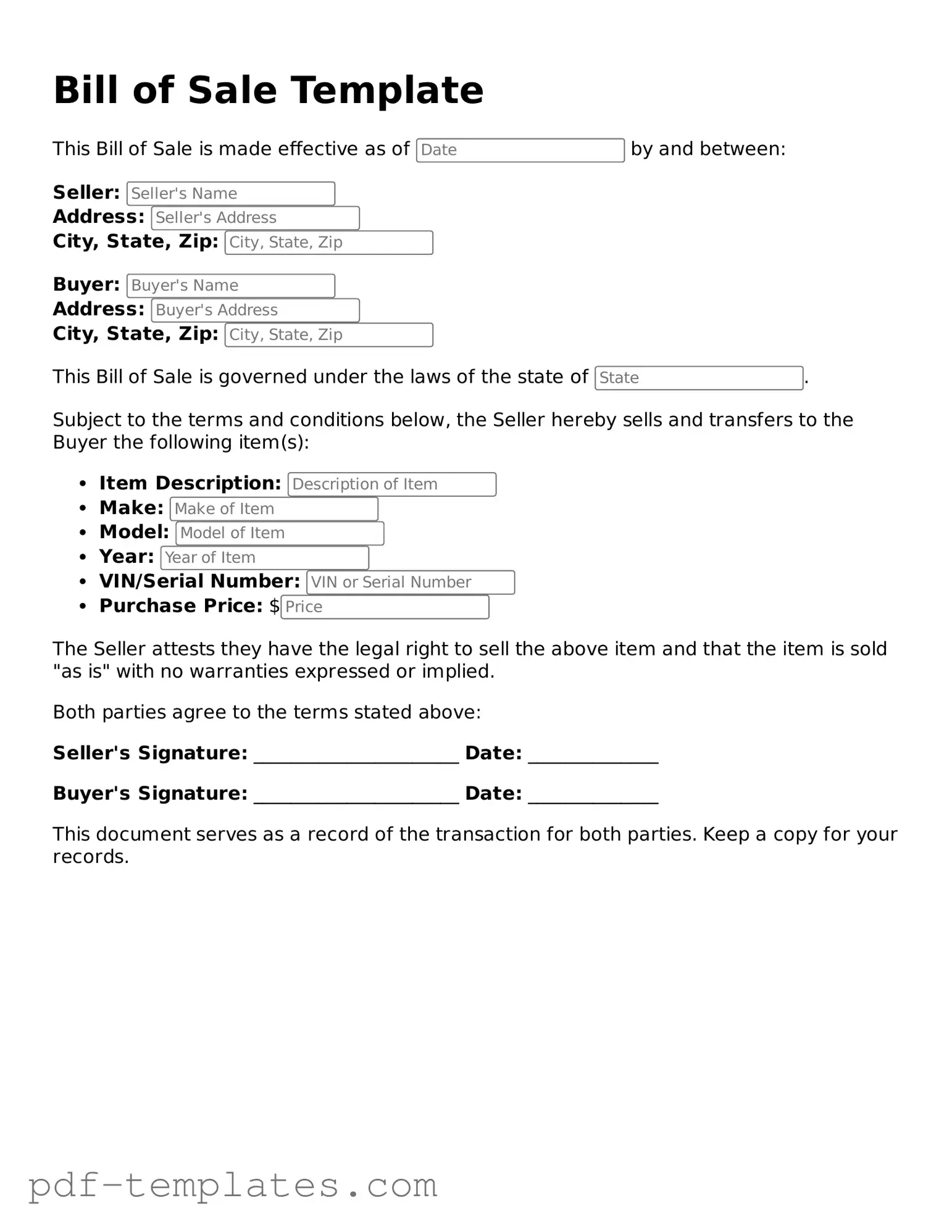- Misconception 1: A Bill of Sale is only necessary for vehicles.
This is not true. A Bill of Sale can be used for various items, including furniture, electronics, and even pets. It serves as proof of transfer for any personal property.
- Misconception 2: A Bill of Sale is not a legally binding document.
In fact, a properly completed Bill of Sale is legally binding. It creates a record of the transaction and protects both the buyer and seller.
- Misconception 3: You don’t need a Bill of Sale if you have a receipt.
While a receipt is helpful, a Bill of Sale provides more detailed information about the transaction, including the condition of the item and any warranties or guarantees.
- Misconception 4: A Bill of Sale is only for private sales.
Both private and business transactions can benefit from a Bill of Sale. It clarifies the terms of the sale for all parties involved.
- Misconception 5: You can’t use a Bill of Sale for gifts.
A Bill of Sale can also be used for gifts. It can clarify the transfer of ownership, especially for valuable items.
- Misconception 6: A Bill of Sale must be notarized.
Notarization is not always required. However, having a Bill of Sale notarized can add an extra layer of authenticity.
- Misconception 7: A Bill of Sale is the same as a title transfer.
While they are related, a Bill of Sale is not the same as a title transfer. The Bill of Sale documents the sale, while the title transfer formally changes ownership.
- Misconception 8: You can’t use a Bill of Sale for items with liens.
You can use a Bill of Sale for items with liens, but it’s essential to disclose any existing liens to the buyer to avoid legal issues later.
- Misconception 9: A Bill of Sale is only needed for high-value items.
A Bill of Sale is beneficial for both high-value and low-value items. It protects both parties, regardless of the item's worth.
- Misconception 10: You can’t create your own Bill of Sale.
You can absolutely create your own Bill of Sale. Just ensure it includes all necessary details, such as the names of both parties, a description of the item, and the sale price.
